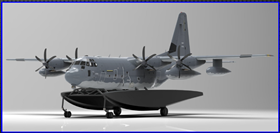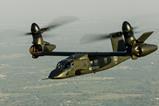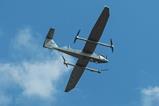The Pentagon is no longer considering plans to modify Lockheed Martin MC-130J tactical transports for amphibious operations.
The US Special Operations Command (SOCOM), which operates the special mission Commando II variant of the prolific C-130 turboprop, had for several years been exploring the feasibility of developing a pontoon conversion kit for existing aircraft.
That programme was known as MC-130J Amphibious Capability (MAC) and was being assessed by SOCOM in partnership with Sierra Nevada.

Although describing the exploratory effort as successful, SOCOM’s head of fixed-wing aircraft procurement now says the command is “hitting a pause on any specific plans to operationalise” the MAC concept.
Speaking at the 2024 SOF Week conference in Tampa, Florida on 8 May, US Air Force Colonel Justin Bronder cited cost concerns and competing acquisition priorities as the reasons for the decision, rather than technical barriers.
“The MAC is a capability we could field”, he says, referencing the technical results of Sierra Nevada’s feasibility study.

Bronder says the effort sought to assess if the pontoon-kit concept was physically possible for the MC-130J airframe, and what would be required to implement a modification programme.
Experts at Sierra Nevada and elsewhere conducted hydrostatic and windtunnel testing on proposed pontoon designs. This was done entirely through digital simulation and modelling, according to Bronder.
While Bronder’s comments appear to indicate those results were favourable, he says the MAC project was ultimately not deemed a funding priority for SOCOM, given the current “budget outlook” and other modernisation priorities.
These include development of a so-called “runway independent” air vehicle – Pentagon-speak for an aircraft that can operate without traditional ground-based infrastructure like tarmacs and traditional airfields.
SOCOM is partnered with the Defense Advanced Research Projects Agency (DARPA) on a development programme called SPRINT that aims to deliver a flying demonstrator of the concept.
Even without an amphibious C-130, the Pentagon may still end up with a military seaplane. DARPA is currently funding development of “Liberty Lifter” – a conceptual heavy-lift transport that would be capable of amphibious take-offs and landings.
Boeing subsidiary Aurora Flight Sciences is a finalist competitor in both the Liberty Lifter and SPRINT programmes.




















































